Year: 2017
When to Use Interpretation vs. Translation

As a leading language solutions provider, we know that people can be uncertain about the difference between — and appropriate use of — interpretation services and translation services.
Both are forms of conveying meaning from one language into another — and both require highly developed language skills — but they are two very different things.
Choosing the right service
At the most basic level, interpretation deals with spoken language while translation is used for written language. Here are four important differences:
1. Timing
- An interpreter works in real time or with only a slight delay on-site or on the phone.
- A translator works on a document after it’s been written, which means there’s time to consult with subject matter experts and employ dictionaries and other resources as needed.
2. Accuracy
- An interpreter must faithfully distill and convey the meaning of the original speech instantaneously, and therefore may at times omit less-critical details.
- A translator converts from one language to another with every single detail adapted to the final language.
3. Fluency
- An interpreter must be fully fluent in both languages so that he or she can seamlessly convey meaning from one language to another.
- A translator typically translates from a foreign language into his or her own native tongue. As such, a translator must understand the foreign language, but not as fluently as their own tongue. (Remember, translators have the luxury of reference materials while interpreters don’t.)
4. Subtleties
- An interpreter must be conversant in both languages’ cultural expressions, metaphors and slang. Additionally, interpreters must transmit verbal nuances like tone, pitch, volume, speed and inflection.
- A translator must recognize and understand the original language’s idioms and metaphors, and be able to convert them into those of his or her native language.
Types of interpretation
There are two main modes of interpretation:
- Simultaneous — Simultaneous interpretation takes place in real time, with the interpreter converting a speaker’s words and meaning into a second language as he or she is talking. The interpreter may be in a booth, listening on headphones to the original speaker and interpreting into a microphone for the target-language audience (which may include other interpreters reproducing the content in their own native tongue). They may be seated or standing near the target listener or audience, whispering the interpretation, or as a participant in a conference call. The instantaneous nature of simultaneous interpretation makes it indispensable for a range of settings, including meetings or conferences, and it can be a critical asset in legal and medical contexts. Since it’s highly demanding for the interpreter, it’s common practice to have two interpreters working together, relieving each other periodically.
- Consecutive — Consecutive interpretation takes place when a speaker pauses periodically to allow an interpreter to convey his or her most recent statement to the target audience before proceeding. The interpreter typically sits or stands next to the speaker, taking notes as needed to help relay everything the speaker just said.
Both types of interpreters should understand the subject matter at hand. In a hospital context, there are medical interpreters; in a court room, there are interpreters who specialize in legal interpretation – all of whom must convey thoughts and concepts clearly, and work well under pressure.
The translation process
Professional translation services use a multi-step process involving a combination of Computer-Assisted Translation (CAT) tools and human expertise to provide high-quality translations of written materials. A typical workflow might look something like this:
- The process begins with the source material being converted into a data format — typically Rich Text Format (RTF) – that can be understood by Translation Memory (TM) software.
- TM software searches for and retrieves existing translated text that matches the content of the current work to help ensure accuracy and consistency across projects.
- A human translator fluent in the target language goes over each of these matched sections, and makes corrections as required.
- The translator translates remaining content that hasn’t been matched to previously translated text.
- A second translator fluent in the target language proofs and edits the first translator’s work, making refinements as necessary.
- Desktop publishing restores the document as closely as possible to its original English design and layout so that the finished translation looks just like the original.
Another popular tool your language services provider can utilize is Machine Translation, an automated translation process that gives readers the “gist” of a document. Machine translation is often paired with human post-editing for projects where higher quality is required but the budget is limited.
Making the right choice
In today’s ever-shrinking world, it would be hard to overstate the importance of clear, accurate communication across languages and cultures. At the center of these international conversations are skilled and dedicated interpreters and translators whose hard work helps ensure that we understand each other, and who help make it possible for us to realize the potential in what we might accomplish together.
Get the latest insights delivered to your inbox
Financial Services Providers: Are You Prepared for New PRIIPs Regulations in the EU?

Starting on Jan 1, 2018, EU manufacturers of packaged retail and insurance-based investment products (PRIIPs) will be required to provide their investors with annually updated Key Information Documents (KIDs). These standardized documents are meant to help investors make more informed decisions on whether an investment is right for them. KIDs were introduced by EU Regulation No. 1286/2014 and are part of the EU’s greater plan to help rebuild investors’ confidence in the financial market in the aftermath of the global financial crisis.
Are you going to be affected?
According to Article 6, “This Regulation should apply to all products, regardless of their form or construction, that are manufactured by the financial services industry to provide investment opportunities to retail investors, where the amount repayable to the retail investor is subject to fluctuation because of exposure to reference values, or subject to the performance of one or more assets which are not directly purchased by the retail investor.” Examples of PRIIPs include investment funds, life insurance policies with an investment element, structured products and structured deposits.
The legislation goes on to clarify that it’s not talking about the kind of investments that involve buying or holding assets themselves. Instead, it’s referencing “products [that] intercede between the retail investor and the markets through a process of packaging or wrapping together assets so as to create different exposures, provide different product features, or achieve different cost structures as compared with a direct holding.”
The purpose of KIDs
Investing in the PRIIPs market is a complicated and potentially risky venture to the uninformed consumer. As noted in Article 1 of the new Regulation, “Existing disclosures to retail investors for such PRIIPs are uncoordinated and often do not help retail investors to compare different products, or understand their features. Consequently, retail investors have often made investments without understanding the associated risks and costs and have, on occasion, suffered unforeseen losses.”
One reason for the confusion is that up until now, there have been different PRIIPs rules for different industries and countries. Regulation No. 1286/2014 will put an end to those discrepancies in the EU. The new law applies to all Member States participating in the PRIIPs market – full stop. By creating uniform rules on transparency at the Union level, regardless of where the PRIIP manufacturers are located or what they’re selling, Regulation No. 1286/2014 should create a level playing field for disbursement of investor information. It’s hoped that the new mandatory Key Information Documents will enhance investor protection and encourage new investors to enter the market.
The procedure
A uniform KID template must be followed for all products across all industry sectors. These documents are subject to an overall maximum of three sides of A4 paper and must include the following sections:
- Purpose
- Product
- What is this product?
- What are the risks and what could I get in return?
- What happens if [PRIIP Manufacturer] is unable to pay out?
- What are the costs?
- How long should I hold it and can I take money out early?
- How can I complain?
- Other relevant information
KID translations
Since the very nature of this law is to provide consumer-friendly documents that are easy to read, understand and compare, it makes sense that the documents will need to be made available in the investors’ native language.
According to the official EU guidelines on Regulation No. 1286/2014, “a KID must be provided in a language prescribed by the [EU] Member State where the PRIIP is distributed in order to ensure that retail investors can understand it.”
If the PRIIP is to be made available cross-border, the PRIIP manufacturer must provide a translated KID for each relevant Member State – and any time a translated KID is made available to retail investors, the PRIIP manufacturer must publish the translation on its website next to the original.
Translation quality and liability
As the guidelines point out, Regulation 1286/2014 does not provide any references for a reliable translation agency, but it does place responsibility for the accuracy of all translations on the PRIIP manufacturer. As such, manufacturers will be accountable for any mistakes or unclear translations that they provide to retail investors.
To avoid such issues, PRIIP manufacturers should partner with a professional translation company that has a certified quality management system. At Morningside, for example, we are ISO 9001:2015 & ISO 13485:2003 certified. Our quality assurance process includes multiple rounds of editing and proofing with built-in redundancies to ensure accuracy, proper terminology, and correct localization for the target audience. We rely on a team of 8,000+ certified in-country translators with a wide variety of subject matter expertise so that you can feel confident that every document translation is technically accurate.
For help translating your Key Information Documents, contact Morningside for a quote today.
Get the latest insights delivered to your inbox
Why Pharmaceutical Companies Need a Great Language Service Provider

Pharma companies are under tremendous pressure to deliver the next billion dollar drug. In 2016, the 15 top-selling prescription drugs generated between $4.3 and $16 billion of revenue. Getting a drug to market, however, involves an extremely complex, time consuming and expensive process that is made even more complicated by today’s globalized cross-border clinical trials, international regulatory approvals, and vastly different cultural markets.
Smart pharmaceutical organizations are always on the lookout for any way to remove bottlenecks and streamline the process. One of the best ways to do this is by investing in an experienced life-sciences language service provider (LSP). The right LSP can be the key to making each phase of this complicated international process run more smoothly and successfully.
Trouble-free clinical trials
According to ClinicalTrials.gov, a service of the U.S. National Institutes of Health, 47% of trials today take place outside of the United States – which makes accurate clinical trial translations an absolute must. Here’s why:
- Successful recruitment of subjects for a trial – This requires a multimedia campaign that reflects and leverages a deep understanding of the local language, culture and attitude toward science and medicine. On-point, accurate brand messaging that speaks to potential volunteers is vital to the process, whether it’s delivered digitally, in print, on TV, or on the radio. A translation agency with a genuine knowledge of the local culture can help you reliably transcreate content that achieves this.
- Good communication with clinical investigators – This is critical to any trial and can be especially difficult when conducted in a foreign language. Language issues can cause mistakes, work slowdowns, or even put a full halt to the trial. To avoid this, pharmaceutical companies should seek out an experienced LSP that can match foreign clinical trials with professional translators who are subject matter experts (SME) in the field under study.
Jumping through hoops around the world
When it comes to health, each country or region has own its rules, regulations, and processes. Acquiring all of the approvals needed for the international development, registration, protection, and marketing of a medication is a daunting task.
The right LSP can make sure all of your documentation is flawlessly translated for each country, reviewed, validated, and in compliance with the specific requirements of each regulatory agency. It’s one-stop shopping at its best: Costs are kept under control, the high quality of your materials is assured, and your approvals are acquired in the most timely manner possible.
Getting medical information to local doctors and patients
It’s one thing to release a new medication, and quite another to ensure it reaches the patients for whom it’s intended. It’s imperative to stage an effective rollout in each country via a marketing strategy that ensures local physicians know of its availability for their patients.
These days, a website is the best way for getting word out internationally regarding a new medication, and a great way to provide ongoing support. However, less than a third of current internet users speak English. If all a company offers is an English website, they’re missing out on communication with nearly 70% of internet users, including people who could benefit from knowing about the drug.
A straight translation of an English site offers a partial solution, but often fails to include the translation of supporting documentation and tends to be left out of routine updates – which renders their content less and less useful to a non-English-speaking audience as time goes by. Another option is to roll out web content country-by-country, working your way across the globe – but launching a product this way can take an extended amount of time.
The best option is to work with an LSP that can provide what’s needed to launch your product simultaneously worldwide, with transcreated content that’s expertly optimized for each local language and culture. LSPs can deploy multilingual SEO for each site version to help local doctors, payers, and patients find it online via different search engines. The LSP may also be able to set up a multilingual content management system so that the site can be refreshed locally as needed.
Secret ingredient for success
A strong, full-service LSP can provide a significant competitive advantage to any pharmaceutical company that wants to get a new medication out into the world. It can help sidestep problems of miscommunication and save money and time in the process.
Get the latest insights delivered to your inbox
Think Globally, Act Locally: Expanding Online Reach
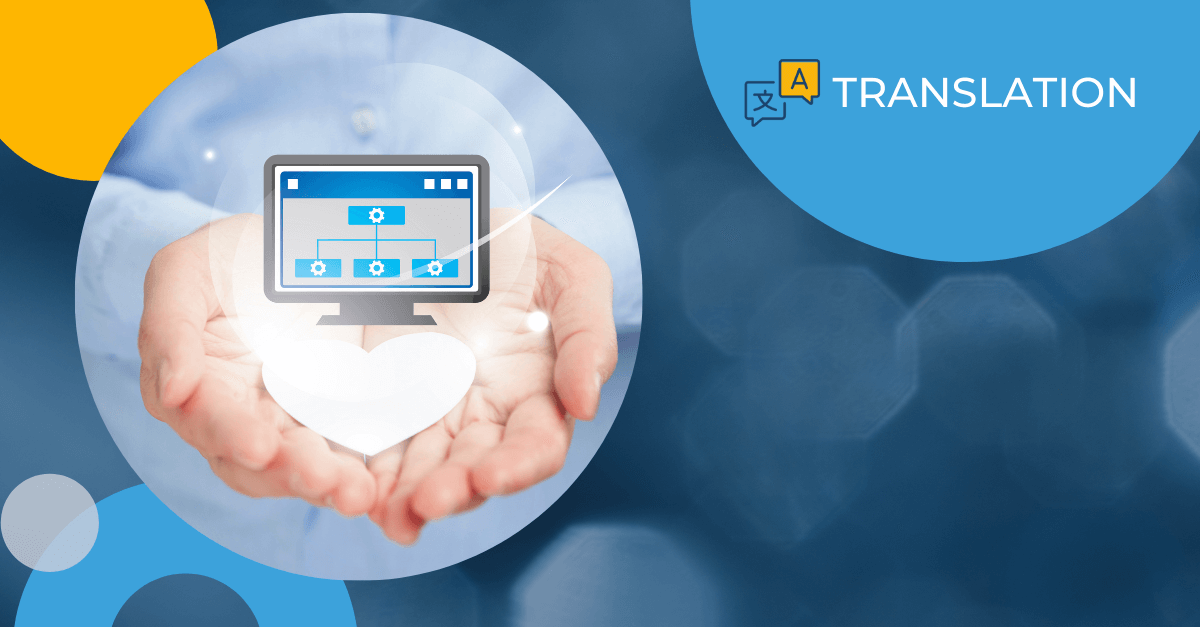
In order to compete in today’s international, multicultural business landscape, companies need a strategy to constantly expand their geographical online reach and customer engagement. That process begins with a localization strategy – a plan for how to communicate effectively across multiple cultures and languages.
The importance of localization
A target audience that feels a company is speaking directly to them will respond in kind. Too often, however, marketing teams fail to integrate a localization strategy until after other key elements of a marketing plan are already in place. Given that social sharing influences 81% of internet shoppers, local company reputation is key. The stakes are too high to make localization an afterthought. Rather, it must be part of the strategic planning from the very beginning.
Bringing a language services provider (LSP) into the process early will ensure that the quality of communication is not compromised when a message is delivered to people in disparate areas and through different languages.
How an LSP helps plan strategy
First, bringing an LSP into the process before any advertising space has been purchased or brochures and websites have been designed are essential in order to ensure quality control over the message and style of delivery.
Second, LSPs can choose effective local keywords and social hashtags by examining how the target population searches for the product or service the company is selling. They also provide the necessary background for social media, which must be localized in order to gain traction. Since social sharing takes place on a peer-to-peer level, speaking the local language means more than using the correct target language words. It means utilizing nomenclature, localized slang and ultimately addressing issues of concern to the local population in an appropriate manner.
Third, when planning to localize website content, LSPs are vital for providing information on a variety of desktop publishing and website issues such as producing the text of ideal length and tone. Design elements like colors and images should be considered at the start of the design process, not after the work has been completed. Too often, companies alienate customers from different cultures by failing to present their products in a way that meets cultural expectations.
The primacy of localization in internet marketing
As web-based advertising continues to grow in sophistication, the need for effective ad targeting becomes crucial for success. Targeting the local population with uniquely relevant content is the best way to increase your reach through social media.
Companies should also look to incorporate multilingual SEO when translating websites. That includes adding the local business name, address and phone number as well as local working hours, if appropriate. But it should not stop there.
Headings (H1) and sub-headings (H2) on websites should reflect a local flavor. Even the web address (URL) can be made to appeal to different populations, even if it points back to the original website.
On landing pages, it is important to include and prominently display sharing buttons with links to local social media accounts. The website and social platforms must be supported by local search engine optimization (SEO) to drive traffic to those platforms and help people find the company when they are seeking the type of services it provides.
Multilingual marketing in the global village
As the internet continues to shrink the world into a single, connected network, marketers must be prepared to deliver materials and messages across borders, cultures, and languages. Companies that fail to do so are at a huge disadvantage against corporations capable of producing materials that will be consumed and spread organically by local populations.
Trying to add local elements (as an afterthought) to a product that is already designed and sold for a different market will be ineffective at best, and potentially harmful to your global brand. Effective localization starts at the very beginning of the marketing strategy. That means bringing the LSP into the inner circle of planning.
Get the latest insights delivered to your inbox
A Multilingual Discovery Algorithm for Legal Document Translation
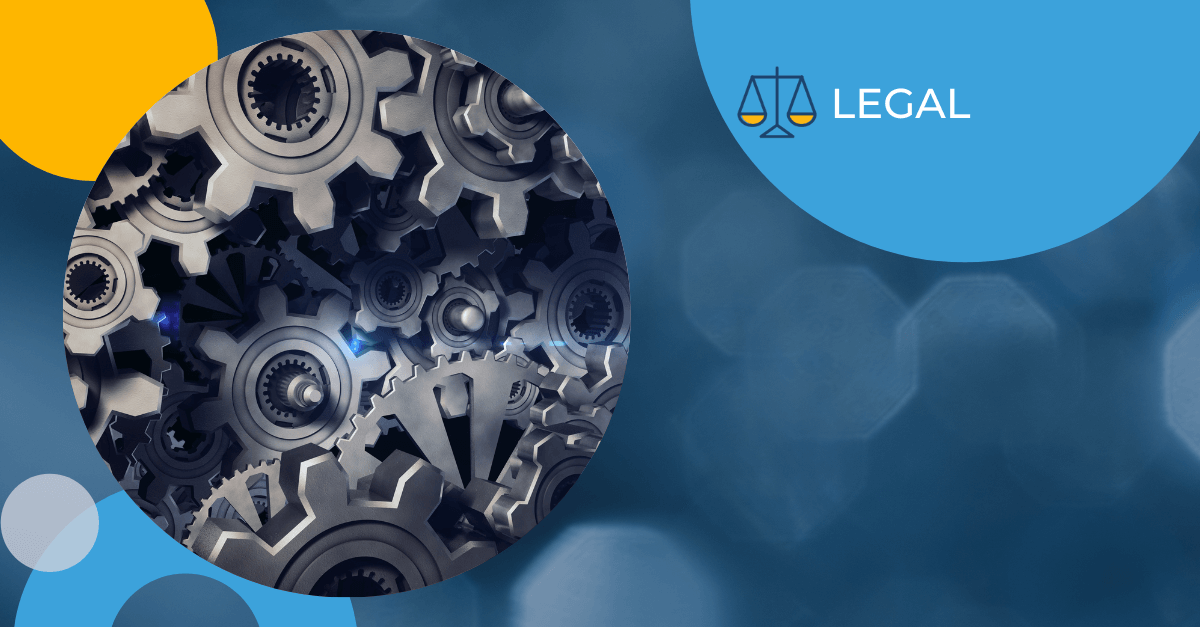
Pre-trial discovery is an essential part of fair procedure and due process. To avoid “trial by ambush” the legal teams on both sides of the case are obligated to facilitate a full exchange of all relevant documentation. Discovery, however, is becoming increasingly complex due to the growth of cross-border litigation in our global economy.
Cross-border litigation by its very nature will often involve one or more foreign languages. Dealing with multilingual documents during discovery makes collecting, filtering, reviewing and processing a far more arduous task. As a result, we recommend following the algorithm below to ensure that your law firm is able to complete discovery quickly, accurately and efficiently.
Is it a small volume?
For a small volume of multilingual discovery documents (for example, less than 1000 words that only need to be translated into two languages), the correct action would be full legal document translation of every single page by human translators with legal expertise. Legal translators understand that the language of the source text reflects a specific legal system that must be translated precisely in order to be clearly understood by the target reader, who is often unfamiliar with other legal systems.
Is it a high volume?
When discovery produces large quantities of documents in a wide range of languages, full human translation can be prohibitively expensive. In this case, the best solution is to partner with an experienced translation company that can filter the documents and identify a much smaller set for full human translation. Professional translation services rely on two main options – foreign language document review and machine translation – to undertake this filtering process, and they are not mutually exclusive.
Foreign language document review
The process for foreign language document review is:
- Step 1: The translation agency hires onsite reviewers (e.g. multilingual attorneys and/or professional translators with legal expertise) to apply legal principles of privilege and determine which are the relevant documents.
- Step 2 (optional): For documents whose relevancy is unclear, onsite reviewers can prepare oral or written summaries for review by the internal legal team.
- Step 3: The reduced set of documents deemed relevant to the case undergo full document translation services by qualified human translators.
Machine translation
Here’s how machine translation works:
- Step 1: Scan, OCR and index all the documents and feed them through a machine translator that can determine the “gist” of what each document contains.
- Step 2: Your internal legal team reviews the machine translated documents in order to identify those that are most relevant to the case.
- Step 3: All the relevant documents are translated word for word by qualified legal translators.
A winning combination
As you can imagine, onsite reviewers will be far more accurate and reliable than content produced by machine translation, but they cost more and take longer to produce results. In fact, according to the Gartner data below, document review is by far the single most expensive component of eDiscovery.
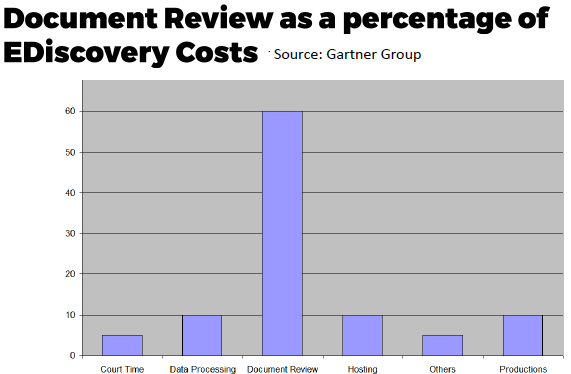
A more cost-effective approach is to utilize a combination of foreign language document review and machine translation in the same project. Document types that are more likely to be core to the case – such as contracts, meeting protocols, or licensing agreements – could undergo the more labor-intensive foreign language document review while the rest could go the machine translation route. These are important decisions that the legal team and its trusted translation agency will make — and implement – together.
Get the latest insights delivered to your inbox
5 Website Translation Best Practices
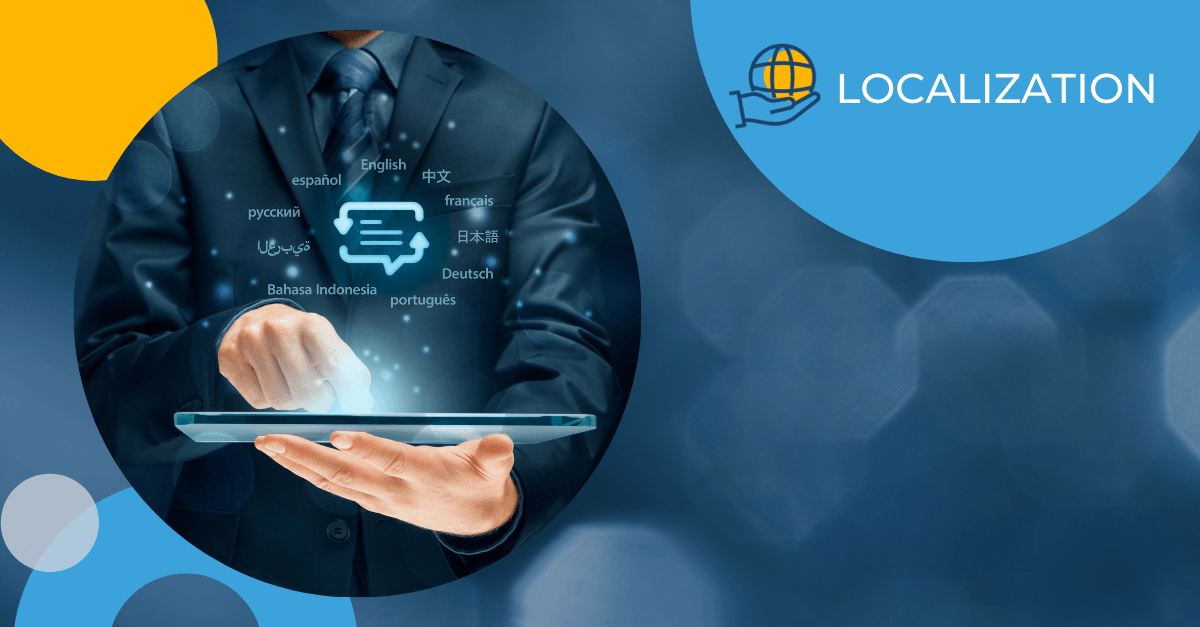
Here’s something to consider when it comes to translating your website: 70% of internet users are not native English speakers. Additionally, 75% of internet users won’t make important purchases from a website if the product descriptions are not written in their native language.
Once you recognize that most of the world and most online shoppers prefer to communicate and shop in their native language, you should build a strategy for how best to reach them. A critical part of that strategy should be translating and localizing your website.
Website localization describes the process of adjusting your website both linguistically and culturally for a local population. This not only entails website translation, but also:
- layout and design modifications
- localizing date, time, currency, units of measure, and address formats
- language direction (which is significantly different for Asian and Middle East languages)
- use of images.
In addition, it makes sense to curate targeted content and make sure that cultural sensitivity, local idiom, and other local preferences are taken into consideration.
It’s a complicated process, but a well-orchestrated website translation and localization of your site can open up new markets, increase customer engagement and satisfaction, reduce the risk of embarrassment and, ultimately, reduce your costs of doing business. Armed with the following 5 best practices, you can turn your website into a global selling platform that helps you effectively target consumers around the globe.
1. Hire professional translators
Every language has important nuances, and your messaging will become muddled or lost if you try to cut corners during the translation process. That’s why it’s important to enlist a professional website translation service to handle your project, instead of relying on inexperienced translators or free online translations that can never substitute for high quality human translation.
A qualified Language Service Provider (LSP) with ISO certification will have a clear and effective quality assurance process in place to ensure that your brand and message are being communicated accurately and effectively.
2. Plan for layout changes
Accuracy is not limited to the words on your website. You also need to keep in mind:
- Spacing – Translating content into another language can dramatically affect how much space the text takes up on the screen. Often, a translation from English can take upwards of 30% more space on the screen.
- Images – Images and other graphics need to be reviewed based on regional and cultural sensitivities. An appropriate image in one country, for example, can be offensive in another. Proper research must be conducted to determine appropriate replacements.
- Coding – Depending on the language, you may also have to adjust the coding to allow special characters to appear on screen accurately.
3. Research the target market
Each target market has its own language and cultural preferences. Having a firm grasp on regional preferences will help you adapt your global marketing strategy and make the most of your international presence. Think about this: 90% of those surveyed in the EU agreed that they would choose to visit a website written in their native language over a foreign language one. So be sure to take the time to research the local audience and distinguishing market features in the regions where you wish to sell your product or service.
One easy way to target a local market is to include social media share buttons that are relevant to local consumers. For example, WeChat, a popular platform in Asia, had a record 889 million active users in Q4 of 2016. However, in the U.S., the app remains relatively unknown. Including WeChat-accessible features in your website is a simple and effective way to access Asian markets. Again, a qualified website translation company can always suggest other regionally relevant social media platforms to include in your campaign.
4. Modify your SEO strategy
Even if you manage to build a non-English version of your site that appeals perfectly to your target audience, your ROI on localizing your website will fall short if potential customers can’t find you on their local search engine results page (SERP). That’s why it’s important to research the various search habits of your target audiences. Find out what search engines and search terms or keywords are popular in the different regions you want to access. Then optimize your website accordingly and make sure it appears in the local SERPs. Your organic traffic in your targeted markets will increase dramatically. One website, for example, experienced a 47% increase in traffic in just three weeks – after being translated into 82 different languages.
After implementing and translating existing SEO media, curating fresh content to remain relevant in local searches is a necessary, consequential step. Features to focus on when crafting your localized SEO strategy include:
- Targeted landing pages
- Adapted domain names (for example: using .cn for an audience based in China)
- Local keyword optimization
5. Consider legal issues
Depending on the nature of your business, your website may feature privacy clauses, terms of service documents, or similar content. While that content is applicable to the laws and regulations of your native culture, you’ll likely need to make adjustments to the legal language when translating your website for an audience in another country. Additionally, you need to make sure your site complies with any local restrictions. Enlisting an experienced LSP is the best way to avoid such pitfalls, and ensure that your site’s legal language is worded correctly and complies with local regulations.
Get the latest insights delivered to your inbox
Overcoming Language Barriers by Translating Scientific Research

For most of our lifetimes, English has been the international language of science. In historical terms, however, a scientific lingua franca hasn’t really existed since Latin lost popularity in the 18th century.
Among the first to break with tradition was Galileo, who in the early 1600s published the majority of his work in Italian (to the dismay of the Church and many of his peers). Isaac Newton began his publishing career in Latin, but switched to English in 1704 with Opticks. By the 20th century, international academic discourse was fractured into three main languages: English, German (e.g. Albert Einstein’s early work) and French (e.g. Marie Curie’s research).
Post-World War I, the geopolitical dominance of the U.S. had the effect of sidelining the German scientific community and establishing English as the international academic and scientific language. In the current century, however, as advanced scientific research and geopolitical power have spread across the globe, the dependence on English is proving insufficient.
Higher education
One issue is that around the world, college-level science is taught in English – which is not a natural mode of expression for non-native speakers. As Monseratt Lopez, a McGill University biophysicist originally from Mexico, told The Atlantic, “Processing the content of the lectures in a different language required a big energetic investment, and a whole lot more concentration than I am used to in my own language.”
Of equal concern is that discomfort with English conversation can inhibit genuine communication and innovation. “I was also shy to communicate with researchers, from fear of not understanding quite well what they were saying,” says Lopez.
Bringing professional interpreters into university classrooms and laboratories is one solution to help bridge the learning gap for students dealing with language and cultural barriers. Another is to offer course materials that are professionally translated and localized.
Scientific publications
While English is considered the language of higher education, a new study by Cambridge University shows this is actually far from universal. Researchers there used Google Scholar, a major repository of scientific publications, to examine over 75,000 scientific documents on biodiversity conservation in 16 languages for the year 2014. They discovered that about a third of the publications were in languages other than English:
- 6% were in Spanish
- 3% were in Portuguese
- 6% were in Simplified Chinese
- 3% were in French.
According to the study, this prompts two problems:
- One third of today’s scientific knowledge is not understood by the majority of scientists because of the lack of scientific document translation.
- Half of the non-English publications are unsearchable using English keywords (because they lack English titles or abstracts).
Study author Tatsuya Amano summed up the results, saying “Language barriers continue to impede the global compilation and application of scientific knowledge.”
Practical application
In a time when concerned English-speaking scientists are struggling to address climate change, the Cambridge study revealed that there are roughly 13,000 related articles that aren’t even a part of the conversation because they were published in a foreign language.
An even more urgent situation arose in January 2004 when veterinarians in China discovered that pigs had become infected with the H5N1 avian flu. They realized that the virus’ presence in pigs meant that the deadly disease could jump to humans. Scientists sounded the alarm in a Chinese veterinary journal, writing, “Urgent attention should be paid to the pandemic preparedness of these two subtypes of influenza.” However, their warning was published only in Chinese. Nobody outside the country noticed it until August of that year — seven months after publication — at which point the World Health Organization and U.N. hastily translated the article and disseminated emergency bulletins of their own.
Translations are the solution
“I believe the scientific community needs to start seriously tackling this issue,” Amano says. “Journals, funders, authors, and institutions should be encouraged to supply translations of a summary of a scientific publication — regardless of the language it is originally published in.”
Now, more than ever before, professional translation and interpretation services are critical to helping scientists solve the health, environment and technology issues that impact each of us as global citizens.
Get the latest insights delivered to your inbox
How to Protect Your Customers from Identity Theft

A recent study revealed that incidents of identity theft in the United States grew by 16% in 2016, compared with the previous year. The Identity Theft and Assumption Deterrence Act of 1998 defines this criminal act as “knowingly transfer[ing] or us[ing], without lawful authority, a means of identification of another person with the intent to commit…any unlawful activity.” In the U.S., it’s a problem that left 15.4 million victims in its wake and a price tag of $16 billion in 2016. The European Union’s law enforcement agency, Europol, believes that victims worldwide lose around €290 billion each year due to cybercrime, calling it “more profitable than the global trade in marijuana, cocaine and heroin combined.”
How are identities stolen?
Never underestimate the resourcefulness and determination of an identity thief. There are many ways they can plot to get your customers’ personal details. Here are two common online schemes of which you should be aware:
- Phishing scams – Are your customers receiving fake or malicious emails that look like they are coming from your business? Spammers use this technique – masquerading as a trusted entity in urgent need of certain personal information – to trick customers into revealing confidential data.
- Bogus websites – Has your website been copied? Today, hackers can use very sophisticated techniques to duplicate the look of your legitimate website – and then use the bogus website to trick your clients into logging in, filling out forms and making purchases. Sites like this exist for the sole purpose of misleading people into providing their credit card information, with no intention of delivering any purchase orders.
In one example of a sneaky data security breach, a woman named Chantay Ware spent two years operating a scheme out of the Starbucks in Cleveland Hopkins International Airport. From 2006 to 2008, she stole personal information provided in Starbucks job applications and used it to apply for — and abuse — 65 credit cards, racking up a total of $115,000 in fraudulent charges!
In addition to individual identity theft, there is also wholesale identity theft. The latter occurs when a hacker steals a large batch of personal information – all in one shot – from a government or company database.
Identity theft and e-commerce
Putting a computer screen in between customers and vendors has made e-commerce stores particularly vulnerable to identity thieves. Think about it – if a cashier has any doubts about a credit card belonging to a customer, all they have to do is ask for proof of ID and check that it matches the card. When the transaction takes place online, there is no way to see if the card actually belongs to the buyer. This is called a card-not-present (CNP) transaction. Between 2015 and 2016, there was a 40% increase in CNP fraud.
Prior to the 2016 holiday season, a survey of 125 retailers that together represent 13% of online sales forecasted that online fraud attempts would rise 43% compared to the previous holiday shopping season. Quick shipping options are contributing to this rise, since vendors have even less time to scrutinize transactions.
Be vigilant
If your company uses electronically stored information or has an online presence (e.g. website, email, social media), then you need to take precautionary steps to protect your customers’ information and your brand. Here are 6 important tips:
- Use computer passwords to prevent outsiders from accessing company machines.
- Set up a firewall to monitor and control incoming and outgoing network traffic.
- Update anti-virus software to defend against viruses, malware and other online threats.
- Use a spam filter to block malicious emails.
- Encrypt sensitive data to prevent unauthorized access.
- Use a wiping program to permanently remove old files from company hardware.
Putting a system in place to protect your customers’ personal information will go a long way toward building the trust – and reputation – you need to succeed.
Get the latest insights delivered to your inbox
Social Media E-Discovery in the Courtroom
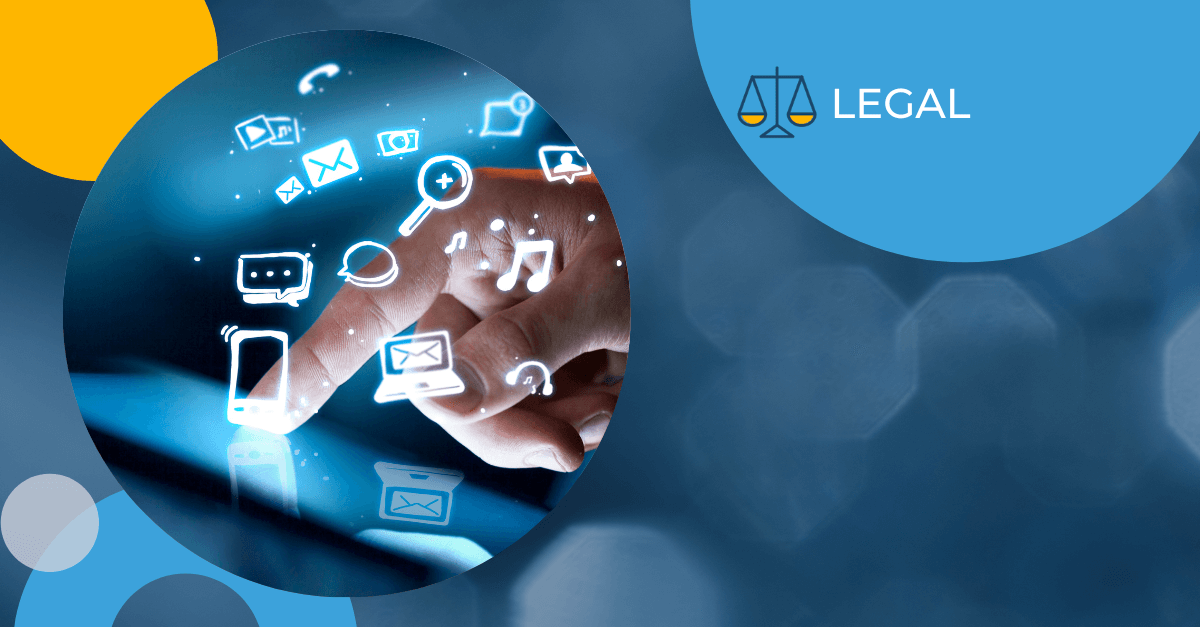
The year is 1986. Mark Zuckerberg is two-years-old and the internet is just starting to make its way into research, academics and business. With the era of electronic data begun, Congress enacts the Stored Communications Act (SCA), extending Fourth Amendment protection against unreasonable search and seizures to electronically stored information (ESI).
Fast forward to 2017. Mark Zuckerberg’s daughter is one-year-old. Email, instant messaging and social networks dominate how we communicate – and ESI has become a routine target of discovery during litigation, including cross-border litigation. Translating legal documents that surface during cross-border e-discovery has become a critical part of that process. In 2013 the global e-discovery market (services and software) was valued at $5.5 billion. By 2022, it is expected to grow to around $21 billion – driven primarily by the exponential year-over-year growth in the volume of ESI generated.
Social media e-discovery
Today, a litigant’s social media posts (on Facebook, Instagram, Twitter, LinkedIn, etc.) can be included in e-discovery if there is evidence that their content is relevant to the case. These posts are used as evidence in numerous lawsuits, but are particularly central to matters related to personal injury, employment, family, theft of IP or unfair competition.
Part of the value of social media posts in e-discovery comes from the metadata, including date and time stamps and geolocation information, all of which can be instrumental to making or breaking a lawsuit. Lawyers, and legal translators (if needed), can use collection tools to capture and index data from public social media accounts around the world. If they are password-protected or otherwise access-restricted, litigation attorneys can request passwords or to receive the content directly from the account holder as part of the e-discovery process.
What does this mean for me?
For the individual, it is important to understand that content you have posted on the internet can and will be used against you in a court of law. There are already many examples of lawsuits claiming damages for physical and mental pain that have been thrown out due to time-stamped pictures of the plaintiff out and about that were used as evidence to prove that the claims were unfounded.
It is forbidden to tamper with potentially damaging social media content once a lawsuit has been brought or even once it becomes clear that a lawsuit is likely. Deleting posts and/or closing accounts can be treated as destruction of evidence, which is a serious offense in a civil or criminal law case.
The best advice is to always keep your social media posts, emails, instant messages, etc. clean of any content that could be construed as incriminating.
What does it mean for my company?
A content-rich online presence is an essential component of doing business today. A recent study conservatively estimated that 65% of Fortune 100 companies have active Twitter accounts and 54% have Facebook fan pages. One out of three F100 companies has a blog. Increasingly, companies are also translating their social media and blogs to target overseas consumers, and those posts may require legal translation in the event of a lawsuit.
Although online content was not as pervasive in 2006 when the Federal Rules of Civil Procedure were amended to include ESI, the Committee responsible for the amendment said the term was “intended to be broad enough to cover all current types of computer-based information, and flexible enough to encompass future changes and developments.” Thus, companies today have a duty to preserve relevant or potentially relevant online content when litigation and legal document review is underway or pending.
There is a growing trend of strong court sanctions against attorneys and their corporate clients for failing to comply with e-discovery rules by tampering with social media content.
Cross-border litigation and social media
Cross-border litigation poses considerable challenges for discovery/e-discovery in general and for social media discovery in particular. The casual and informal language used in social media posts, for example, makes them harder to parse in the machine translation platforms that are often used to pre-screen and catalog foreign language e-discovery content. In such cases, foreign language document review might be the better option. On a more fundamental level, however, international social media e-discovery raises very basic questions such as whose law governs standards of free speech on social media platforms. Or, as Alex Mills writes in the Journal of Media Law, “…whose law rules ‘Facebookistan’?”
The future of social media in discovery
With over 500 million tweets going out every day and close to two billion active Facebook users, it’s a prolific era for shared online content everywhere in the world. And while social media can bridge social gaps and support your marketing and sales efforts, it’s important to remember that every post, picture and comment is timestamped and stored. It can come back to haunt you or your company if litigation arises. Protect yourself, your colleagues and your company by giving serious thought to anything you post online.
Get the latest insights delivered to your inbox
Five Benefits of Single-Source Authoring for Technical Translation
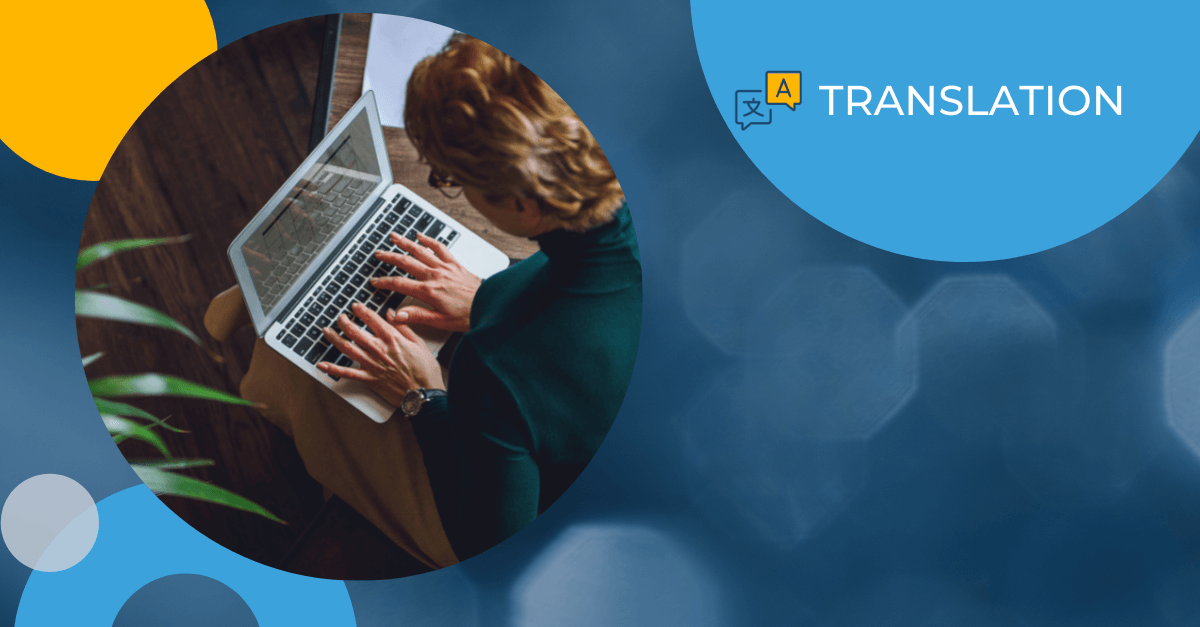
Single-source authoring is a methodology commonly used by technical writers to increase the re-use of existing written content instead of rewriting information. When preparing materials for marketing abroad, single-source authoring software can make a significant difference in reducing the amount of technical translations you will need to complete for foreign audiences.
Take the example of a technical writer working at a company that makes a line of glucose monitoring devices. The devices all perform similar functions, but have slightly different features. The operation of all the monitors is very similar. It doesn’t make sense to write five separate user manuals and then translate those documents. It makes more sense to write the content once and then include any additional information to cover the unique features of each model. For example, the topic “Turning on your glucose meter” may be the same for all five models while “Calibrating your meter” may vary by model. In a single-source environment, the topic “Turning on your glucose meter” would appear only once, but “Calibrating your meter” could have different versions.
Now that the concept of single-source authoring is clear, let’s look at five key benefits of this methodology:
1. Better consistency
For technical document translation, consistency is critical for the efficient delivery of instructions to the user of software and equipment. There is little benefit to writing unique prose to describe repetitive tasks. It is important to maintain a consistent, predictable style, along with consistent use of terminology. Single-source authoring helps achieve this by focusing on the re-use of content. As in the glucose meter example, why write five different versions of “Turning on your glucose meter” when the only difference between the versions might be the model name? Write it once and insert a variable for the model name. Depending on which version of the manual you are publishing, your authoring tool can automatically substitute the correct model name.
2. Reduction of repetition
Repetition of content you have already written not only takes up space within your authoring environment, it also introduces the risk of publishing inconsistent information if one instance of a repeated passage is modified in one location, but not another. With single-source authoring, a given chunk of text is managed in one location and then its use is automatically multiplied across various documents by your authoring tool – saving you a lot of effort.
Another important issue for technical translation projects is avoiding the need to translate the same content twice. High-quality translation companies already have ways to address repeated text efficiently (through translation memory and preferred terminology lists), but there is still a cost to process each instance of repetition. This can be avoided by using single-source authoring, since each instance of text is unique.
3. Flexible output options
Single-source authoring tools enable authors to publish to myriad formats. MadCap Flare, for instance, allows automatic publishing to the following:
- HTML5 Webhelp (PC and Mobile)
- Eclipse Help
- WebHelp
- WebHelp Plus
- XPS
- Adobe Framemaker
- MS Word
This can literally be done with the click of a button. That is why single-source authoring software is also known as multi-channel publishing software. For example, imagine that you have a Help System for your company’s software product. You can automatically create a version that can work on users’ computers and mobile devices along with a PDF version that they can print – all using the same set of source files. You don’t need multiple copies of your content to generate these various formats.
Simultaneously, your technical translation agency can generate professionally translated versions of your documents using the same source files you used to produce your (English) originals.
4. Centralized control of critical data across multiple regions
By taking control of your content in a single-source environment, you can guarantee global standards. If all your technical document translations are based on the same set of original files using the same structure, you can more confidently publish into multiple languages, knowing which results to expect. This includes control of your intended message as well as the look and feel of your documents. To achieve this 10 or 15 years ago was difficult and time-consuming. Now it still takes effort, but it’s a fraction of what was required in the past.
5. Reduce desktop publishing costs
When using single-source authoring, the source project you create will contain all your design choices for page layout, logo placement, fonts and respective styles. Most single-source authoring tools leverage the use of CSS (Cascading Style Sheets) technology. CSS standardizes styles across your whole documentation environment. Your CSS can even be internationalized so that the right fonts are used for specific languages (this is critical for logographic languages such as Chinese and Japanese). By centralizing control of design decisions, it is possible to automatically generate foreign language translations of your original documentation that require very little manual desktop publishing. Traditional document formats (MS Word, Framemaker, InDesign, etc.) that are translated typically require labor-intensive desktop publishing, which can cost as much as 30% of the cost of translating documents. When using single-source authoring, this cost drops to less than 10% of the cost of translation.
Implementing single-source authoring
Some of the most popular tools for single-source authoring are MadCap Software’s Flare, Adobe RoboHelp, or Adobe Framemaker. Once implemented correctly, single-source authoring can increase your company’s publishing capabilities while lowering costs for all your technical translations and communications.

